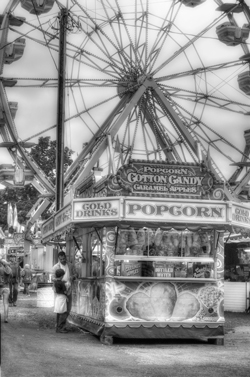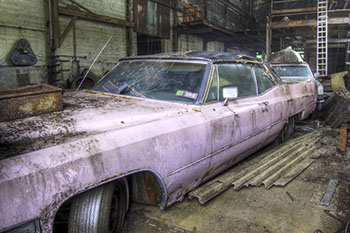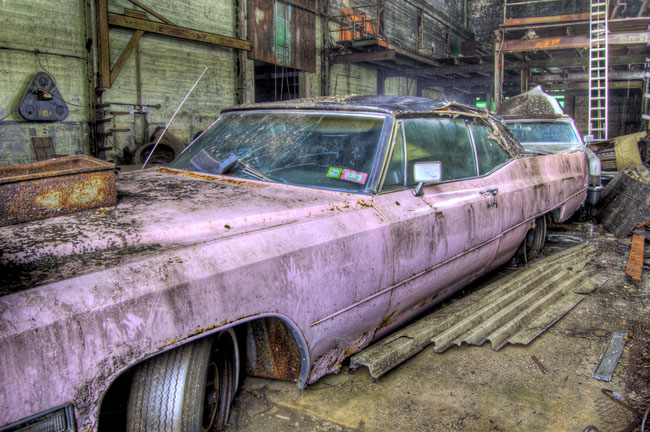Technically Speaking...My photography utilizes technology old and new.. film and digital... darkroom and computer. Much of my recent work represented here is HDR or High Dynamic Range Imaging HDR is a different way of shooting and processing photos.
|
 |
About HDR Photography:
When I was actually at the location shown below with the car in the warehouse, I could see with the naked eye all the details on the walls and the details of the car without either one being "overexposed." Our eyes have a very wide dynamic range.
Cameras on the other hand have a limited dynamic range they can see at once: As you see in the 3 pictures below the range of the camera is limited and so the pictures do not look like what my eyes saw. So when we are shooting we always are compromising, trying to get the most important part correctly exposed but often at the expense of sacrificing background or sky details.
To compensate for the limited dynamic range of a camera, exposures can be taken for both the lightest and the darkest areas and then blended together.
 |
||
Correct for Car but |
Correct for Walls but Overexposed for the Car |
Typical Average: What you would get with single shot, camera in Program Auto |
So in this example I have taken the 3 exposures of the scene which I then blended in software. This is creating the high dynamic range image, a.k.a. HDR or HDRI. It is a special type of digital negative called a radiance file. The radiance file or .hdr does not look like much on today's monitors. When monitor technology catches up, they will look very natural but at this point they require a process of "tone mapping" to bring the image into the dynamic range that computer monitors and printers can represent.
| The result is a photo that looks more like what I saw with the naked eye when were there... revealing detail in both shadow and highlight... |  |
....like your eyes see but previously difficult to represent in a single photograph.
I like to continue the process with some further adjusting to highlight the details I am after.
Example: Final of this shot:

This type of blending has been done in the dark room previously by overlaying different negatives and dodge and burn techniques but digital cameras and computers have greatly refined the process.
The techniques were developed primarily for shooting complicated interiors using sheet film view cameras. Innovation has driven technology into the digital realm, so now a combination of digital raw cameras and tone-mapping software has taken these tools to the next level.
As a added bonus to the artist, the software can be used to get some super crazy and painterly effects.
I like to use the the software both as intended and as special effect as well.
